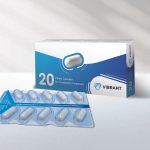
People with peanut allergies have to be vigilant about avoiding the food and always be armed with emergency treatment. Now scientists say they’ve taken an early step toward a drug that could prevent severe reactions to peanuts in the first place. The compound has only been tested in lab mice, and no such drug will be available for people anytime soon, experts stressed. But in early experiments, researchers found that the drug protected lab mice from severe allergic reactions to peanuts for more than two weeks. However, animal findings do not always pan out in humans. The vision is to have a self-injected medication that people with peanut allergy can take every couple weeks, or maybe once a month, according to researcher Mark Kaplan, chair of the Department of Microbiology and Immunology at Indiana University School of Medicine. It would not be a “cure” for the condition. But it could give people an additional layer of protection should they accidentally ingest peanuts. “Accidental exposure is always a real risk,” Kaplan explained. That’s because peanuts are harder to avoid than many people realize, he noted. They are often used as ingredients in processed or prepared foods, and cross-contamination is also possible — when the same equipment that has touched peanuts is used for other foods, too. Even though parents and adults with peanut allergy studiously read… read on > read on >


















